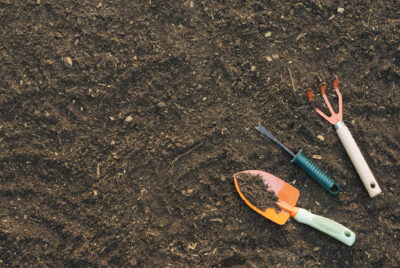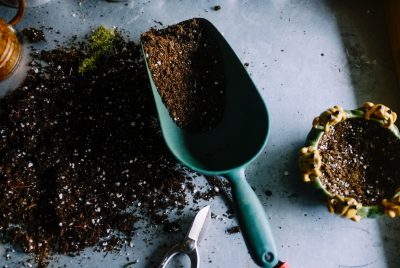What Are Arbor Gardens and How to Build Them
As an avid gardening enthusiast, I have always been captivated by the beauty and charm of arbor gardens. These enchanting structures not only provide shade but also serve as stunning focal points in any outdoor space. In this article, I will guide you through the process of creating your own arbor garden, offering helpful suggestions and reasons for each step.
Arbor gardens are magical spaces that combine architecture and nature, creating a serene and captivating atmosphere. The presence of an arbor adds a touch of elegance while providing support for climbing plants, such as roses, vines, or jasmine. In this article, I will share my knowledge and passion for arbor gardens, walking you through the process of building your very own.
Understanding Arbor Gardens
Arbor gardens are structures composed of posts and beams, often forming a framework or archway. They are designed to support climbing plants, which weave and intertwine around the structure, creating a breathtaking display of colors, textures, and fragrances. Arbor gardens can be standalone structures or integrated into existing fences or walls.
Benefits of Arbor Gardens
Arbor gardens offer numerous benefits that make them a desirable addition to any outdoor space. Let’s explore some of the advantages they provide:
Shade and Privacy
Arbors provide shade, creating a cool and comfortable area where you can relax and unwind. They offer respite from the sun’s intense rays while maintaining an open and airy ambiance. Additionally, the climbing plants that adorn the arbor can act as natural privacy screens, shielding your garden from prying eyes.
Visual Appeal and Focal Point
An arbor garden instantly becomes a focal point in your yard, drawing the eye and adding a touch of beauty and charm. The intricate interplay between the structure and the climbing plants creates a captivating visual display, transforming a simple garden into a stunning oasis.
Versatility and Design Options
Arbor gardens come in a variety of styles, sizes, and designs, allowing you to choose one that complements your personal taste and the overall aesthetics of your outdoor space. Whether you prefer a classic wooden arbor or a modern metal structure, the options are plentiful.
Encouraging Vertical Gardening
By providing vertical support for climbing plants, arbor gardens make the most of limited space. They allow you to introduce a wide array of plants without taking up valuable ground area. Vertical gardening not only adds visual interest but also maximizes your gardening possibilities.
Selecting the Right Location for Arbor Gardens
Choosing the perfect location for your arbor garden is crucial to its overall success and impact. Consider the following factors when selecting a spot:
Sunlight and Shade
Evaluate the sun exposure in your yard throughout the day. Most climbing plants thrive in areas with partial to full sun, so choose a location that receives adequate sunlight. However, if you live in a particularly hot climate, consider providing some shade during the hottest parts of the day.
Accessibility and Flow
Ensure that the location you choose allows for easy access and good traffic flow in your outdoor space. The arbor should not obstruct pathways or create obstacles. Consider the overall layout of your garden and how the arbor will fit seamlessly into the existing design.
Choosing the Perfect Arbor
When it comes to selecting the right arbor for your garden, you have a multitude of options. Consider the following factors:
Material Selection
Arbors are available in various materials, including wood, metal, and vinyl. Each material has its own unique characteristics and aesthetic appeal. Wood offers a classic and natural look, while metal provides a modern and sleek appearance. Vinyl, on the other hand, requires less maintenance and is more resistant to rot and pests.
Size and Scale
Consider the size and scale of your outdoor space when choosing an arbor. You want the structure to complement the surroundings without overpowering the area. Take measurements and consider the height, width, and depth of the arbor to ensure it fits harmoniously within your garden.
Materials and Tools
Before you embark on building your arbor garden, gather the necessary materials and tools. Here’s a list of what you’ll need:
Materials required:
- Arbor kit or individual components (posts, beams, crosspieces)
- Wood screws or brackets
- Concrete mix (if necessary)
- Climbing plants of your choice
- Mulch or gravel for the base
Tools to Prep:
- Measuring tape
- Level
- Drill or screwdriver
- Saw (if customization is required)
- Shovel
- Wheelbarrow
- Gardening gloves
Preparing the Site for your Arbor Garden
Once you have gathered all the materials and tools, it’s time to prepare the site where your arbor garden will be installed. Follow these steps:
Clearing the Area
Remove any vegetation, rocks, or debris from the designated area. Ensure the ground is level and free from obstructions.
Marking the Placement
Use stakes or spray paint to mark the placement of the arbor. Double-check the measurements and alignment before proceeding.
Digging Holes
Dig holes for the posts according to the specifications provided with your arbor kit. The depth and width of the holes will depend on the size and stability required for your specific arbor.
Building the Arbor Structure
Now comes the exciting part: building the arbor structure itself. Follow these steps to assemble your arbor garden:
Post Installation
Place the posts into the prepared holes, ensuring they are plumb and level. Use concrete mix if necessary to secure the posts firmly in place. Allow the concrete to set according to the manufacturer’s instructions.
Attaching Beams and Crosspieces
Attach the beams and crosspieces to the posts using wood screws or brackets. Follow the manufacturer’s instructions and ensure the connections are secure and stable.
Customization Options
If desired, you can customize your arbor by adding decorative elements or making adjustments to the design. This is where your creativity can shine, allowing you to personalize your arbor garden.
Adding Climbing Plants
With the structure in place, it’s time to introduce the stars of your arbor garden: the climbing plants. Here are some tips for selecting and planting climbing plants:
Choose Suitable Climbers
Select climbing plants that are well-suited to your climate, soil conditions, and available sunlight. Consider the growth habits, flowering periods, and maintenance requirements of the plants you choose.
Planting and Training
Plant the climbing plants at the base of the arbor, ensuring they have enough room to establish their root systems. As the plants grow, gently guide them towards the arbor structure, training them to weave and climb around the beams and crosspieces.
Maintenance and Care of Arbor Gardens
To keep your arbor garden thriving and looking its best, regular maintenance and care are essential. Here are some key tasks to consider:
Pruning and Trimming
Prune and trim the climbing plants as needed to control their growth and maintain the desired shape of the arbor garden. Remove any dead or diseased branches to promote healthy growth.
Watering and Fertilizing
Monitor the moisture levels of the soil around the arbor garden and water as necessary. Provide adequate hydration, especially during dry spells. Additionally, fertilize the climbing plants according to their specific requirements to ensure optimal growth.
Enhancing your Arbor Gardens
While the arbor garden itself is a beautiful feature, there are additional elements you can incorporate to enhance its appeal. Consider these suggestions:
Lighting
Install outdoor lighting around the arbor garden to create a cozy and enchanting atmosphere during the evenings. Choose soft and warm lighting to highlight the structure and the climbing plants.
Seating and Accessories
Introduce comfortable seating options, such as benches or chairs, to encourage relaxation and enjoyment of the arbor garden. You can also add accessories like hanging baskets, bird feeders, or wind chimes to further enhance the ambiance.
Helpful Suggestions
As you embark on your arbor garden journey, keep these helpful suggestions in mind:
- Research local regulations and permits: Depending on your location and the size of the arbor, you may need to obtain permits or adhere to specific regulations. Check with your local authorities before starting the project.
- Consider plant compatibility: Choose climbing plants that are compatible with each other in terms of growth habits, sunlight requirements, and maintenance needs. This will ensure harmonious growth and minimize competition between plants.
- Regularly inspect and maintain the structure: Periodically check the arbor for any signs of damage or wear. Replace any broken or deteriorating components promptly to ensure the safety and longevity of your arbor garden.
Conclusion
Arbor gardens are captivating additions to any outdoor space, combining elegance, functionality, and natural beauty. Building your own arbor garden allows you to create a personalized sanctuary where you can relax, connect with nature, and enjoy the splendor of climbing plants. With the right materials, careful planning, and a touch of creativity, you can bring your arbor garden dreams to life.
FAQs on Arbor Gardens
- Can I build an arbor garden if I have limited gardening experience? Building an arbor garden requires basic DIY skills, but it is achievable for beginners. Follow the instructions carefully, seek guidance when needed, and enjoy the process of creating your own garden oasis.
- Do all climbing plants require the same level of maintenance? No, different climbing plants have varying maintenance requirements. Some may require regular pruning and training, while others are more self-sufficient. Research the specific needs of the plants you choose to ensure proper care.
- Can I customize the design of my arbor garden? Absolutely! Feel free to get creative with your arbor garden design. Add personal touches, incorporate decorative elements, and tailor the structure to suit your unique style and preferences.
- Are there any specific tools required for building an arbor garden? You will need basic tools such as a measuring tape, level, drill or screwdriver, and a shovel. Depending on the complexity of the arbor design, additional tools may be required.
- Can I grow vegetables in an arbor garden? While arbor gardens are primarily known for supporting climbing plants like vines and flowers, you can also grow certain vegetables that have climbing habits, such as tomatoes or beans. Ensure you provide adequate support for the vegetable plants to climb and thrive.
So, take the leap and embark on your arbor garden journey. Build an enchanting space that reflects your personal style, provides shade and beauty, and offers a sanctuary for relaxation and enjoyment. Happy gardening!





